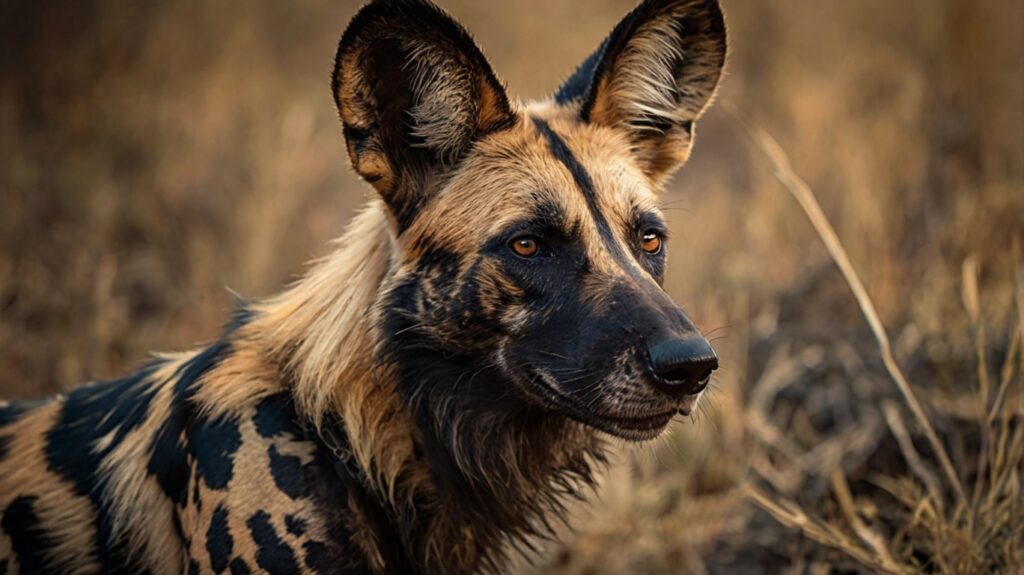Table of Contents
- Introduction
- Physical Characteristics
- Habitat and Distribution
- Behavior and Social Structure
- Diet and Hunting Techniques
- Reproduction and Lifespan
- Conservation Status and Threats
- Conclusion
- FAQs
Introduction
The African wild dog (Lycaon pictus), also known as the painted wolf or cape hunting dog, is one of Africa’s most endangered and social carnivores. Recognizable by its unique coat patterns, this species plays a crucial role in maintaining ecosystem balance. Unfortunately, habitat loss and human-wildlife conflict threaten its survival. This article explores the African wild dog’s behavior, habitat, and conservation efforts.

Physical Characteristics
African wild dogs are easily identified by their:
- Patchy fur with black, brown, white, and yellow markings
- Large, rounded ears for heat regulation and communication
- Lean, muscular bodies built for endurance hunting
- Four toes per foot (unlike other canids, which have five)
Habitat and Distribution
These canids primarily inhabit:
- Savannas and grasslands
- Wooded areas and scrublands
- Sub-Saharan Africa (Botswana, Zimbabwe, Tanzania, and South Africa)
Due to habitat fragmentation, their range has significantly decreased.
Behavior and Social Structure
African wild dogs are highly social, living in packs of 6–20 members. Key behaviors include:
- Strong pack hierarchy led by an alpha pair
- Cooperative hunting and shared care for pups
- Vocal communication through whines, chirps, and growls
Diet and Hunting Techniques
As apex predators, they primarily hunt:
- Antelopes (impalas, kudus)
- Warthogs and small mammals
- Birds occasionally
Their hunting strategy relies on teamwork, stamina-based chases, and high success rates (over 80%).
Reproduction and Lifespan
- Breeding: Only the alpha pair reproduces, with a gestation of 70–75 days.
- Litter size: 6–16 pups, raised communally.
- Lifespan: 10–12 years in the wild, longer in captivity.
Conservation Status and Threats
The African wild dog is classified as Endangered by the IUCN due to:
- Habitat loss from human expansion
- Human-wildlife conflict (poisoning, road accidents)
- Diseases (rabies, canine distemper)
Conservation efforts include:
- Protected reserves and wildlife corridors
- Anti-poaching initiatives
- Community education programs
Conclusion
The African wild dog is a fascinating yet critically endangered species. Protecting them requires global conservation efforts, habitat preservation, and reducing human conflict. By supporting wildlife initiatives, we can help ensure their survival for future generations.
FAQs
1. Why are African wild dogs endangered?
They face habitat loss, human persecution, and disease outbreaks.
2. How do African wild dogs hunt?
They use teamwork, endurance running, and strategic chasing to exhaust prey.
3. What is the lifespan of an African wild dog?
They live 10–12 years in the wild, slightly longer in captivity.
4. How many African wild dogs are left?
Fewer than 6,600 remain in the wild.
5. Are African wild dogs related to domestic dogs?
No, they belong to a separate genus (Lycaon) and cannot interbreed with domestic dogs.
